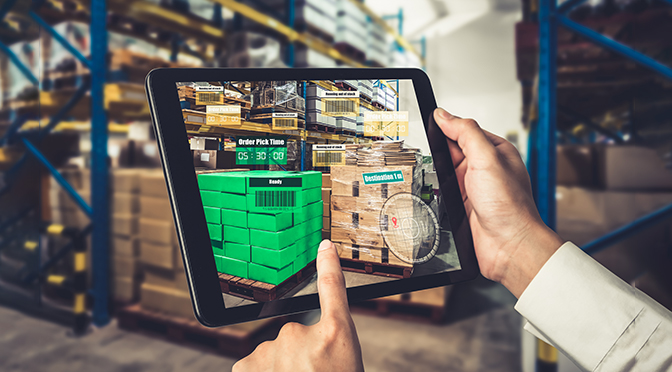Riding The Cloud – The Future Of Transportation Management System
Get In Touch
Your information is protected by our Privacy Policy and Terms of Use.
Our Offices
E 237, First Floor, Phase VIII B Sector-74,
Industrial Area, Mohali-160071, Punjab
Phone: +(91) 93010-10197
6470 East Johns Crossing, Suite 160
Johns Creek, GA 30097
Phone: +1(470)-268-9868
531A, Upper Cross Street, #04-95,
Hong Lim Complex, Singapore - 051531
Phone: +1(470)-268-9868
- Solutions For
- Solutions
- Services & Expertise
- Case Studies
- Insights
-
Get In Touch
Get In Touch
Your information is protected by our Privacy Policy and Terms of Use.
Our Offices
Zapbuild Technologies Private LimitedIndia
E 237, First Floor, Phase VIII B Sector-74,
Industrial Area, Mohali-160071, Punjab
Phone: +(91) 93010-10197Zapbuild Technologies (US) LLC United States
United States
6470 East Johns Crossing, Suite 160
Johns Creek, GA 30097
Phone: +1(470)-268-9868Zapbuild Technologies (S) PTE LTDSingapore
531A, Upper Cross Street, #04-95,
Hong Lim Complex, Singapore - 051531
Phone: +1(470)-268-9868
- Learning Management System
- Command and Control Center
- Transportation Management
- Warehouse Management
- Fleet Management
- Supply Chain Management
- Document Contracts Management
- Load Board Platform
- Route Optimization
- Electronic Proof Of Delivery
- Freight Exchange Platforms
- Customer Relationship Management
- Data Analytics and Business Intelligence
- Logistics Aggregator
- Crowdshipping Marketplaces
- Reverse Logistics Marketplace
Maximizing Delivery Efficiency: 9 Practical Ways Technology Can Help You Improve It

Imagine a world where packages arrive at your doorstep with lightning speed, where deliveries are seamlessly orchestrated with flawless precision, and where customer satisfaction soars to new heights. In the fast-paced world of logistics and transportation, businesses face the critical challenge of delivering goods swiftly and efficiently to meet the ever-growing demands of customers.
Today, faster delivery services are becoming the norm, and organizations must find innovative ways to optimize their delivery processes and create exceptional fulfillment experiences.
To tackle this challenge head-on and deliver exceptional results, businesses can turn to technology as their ally. With advancements in transportation & fleet management systems and other technologies, organizations can revolutionize their operations and maximize delivery efficiency.
Overcoming Hurdles in Achieving Optimal Delivery Efficiency: Key Challenges Faced by Transportation and Management Businesses
Maximizing delivery efficiency is a critical goal for transportation and management businesses. However, several challenges pose obstacles along the path to achieving optimal efficiency. Here are five key challenges faced in maximizing delivery efficiency:
Complex Supply Chain Networks
Modern supply chains often involve intricate networks with multiple suppliers, warehouses, distribution centers, and transportation modes. Coordinating and optimizing these networks can be a daunting task, requiring seamless collaboration and effective communication to ensure efficient deliveries.
Increasing Customer Expectations
Customers’ expectations for faster, more convenient deliveries continue to rise. The demand for same-day or next-day deliveries, real-time tracking, and flexible delivery options puts immense pressure on transportation businesses. Meeting these heightened expectations requires streamlined operations and innovative solutions.
Last-Mile Delivery Complexity
The last mile of delivery, from the distribution center to the customer’s location, presents unique challenges. It involves navigating densely populated areas, managing individual deliveries, and dealing with parking constraints. Efficiently planning and executing last-mile deliveries can significantly impact overall delivery efficiency.
Inventory Management and Warehousing
Effective inventory management and warehousing play a critical role in delivery efficiency. Striking the right balance between maintaining sufficient stock levels and avoiding excessive inventory holding costs is crucial. Optimizing warehouse layouts, implementing accurate inventory tracking systems, and efficient picking and packing processes contribute to streamlined operations.
Technological Integration and Adoption
Embracing and implementing technology solutions can be challenging for businesses accustomed to traditional manual processes. Integrating transportation management systems, fleet management software, and other advanced tools requires investment, training, and change management. Overcoming resistance to technological change and ensuring smooth adoption is vital for maximizing delivery efficiency.
By addressing these challenges head-on, transportation and management businesses can develop strategies to overcome obstacles and maximize delivery efficiency. Embracing technological advancements will help businesses stay competitive and meet customers’ evolving demands.
Let’s explore some of the most practical ways technology can help you overcome these challenges, improve delivery efficiency, and thrive in the logistics and transportation industry.
Smart Routing for Navigating Efficiency at Every Turn
Smart routing is a game-changing technology that revolutionizes how logistics and transportation businesses plan and execute their delivery routes. By leveraging advanced algorithms and real-time data, companies can optimize their routes to achieve maximum efficiency.
When it comes to determining the most efficient route, smart routing takes into account various factors. It considers real-time traffic conditions, allowing drivers to avoid congested areas and take alternate routes for quicker deliveries. Weather conditions are also taken into consideration to avoid adverse weather that may impact the delivery schedule.
Leveraging Transportation Management Systems
Cloud-based Transportation Management Systems (TMS) have revolutionized the logistics and transportation industry by providing businesses with a comprehensive set of tools and capabilities to optimize their operations. TMS software solutions bring together advanced technology, data analytics, and intelligent algorithms to streamline logistics planning, reduce costs, and enhance delivery efficiency.
A TMS that is custom-made to your specific business needs can help your business automate tasks such as order processing, documentation, carrier selection, and freight payment, freeing up valuable time for logistics professionals to focus on more strategic activities. Therefore, they can reduce errors, speed up processes, and improve operational efficiency.
Fueling Success with Fleet Management Software
Efficient fleet management is crucial for logistics and transportation businesses to ensure smooth and cost-effective delivery operations. Fleet management software offers a comprehensive solution that empowers businesses with real-time visibility, data analytics, and automation to optimize their fleet performance.
One of the key benefits of fleet management software is real-time vehicle tracking. By utilizing GPS technology, businesses can monitor the location of their vehicles in real time. This visibility allows for better coordination, improved response times, and enhanced customer service. Companies can proactively address any issues or delays, make informed decisions, and provide accurate updates to customers regarding their deliveries.
Powering Efficiency with Warehouse Management Software
Warehouse Management Software unlocks a new level of productivity for logistics businesses. WMS streamlines inventory management, order fulfillment, and warehouse operations through automation. By automating tasks such as receiving, put-away, picking, and packing, businesses can accelerate order processing, reduce errors, and optimize inventory levels, leading to faster and more accurate deliveries.
Knowledge Acceleration with TLMS
A Transportation Learning Management System (TLMS) is a powerful tool that serves as a centralized hub for knowledge and training in the transportation industry. Designed to enhance the skills and expertise of drivers, warehouse staff, and other transportation personnel, TLMS offers a range of interactive training courses, tracks training progress, and assesses performance. The courses cover a wide range of topics, including safe driving practices, regulatory compliance, load handling, and customer service. The interactive nature of the courses allows employees to engage actively, fostering a better understanding of the material and increasing knowledge retention.
Unleashing Potential with Predictive Analytics and AI
Harnessing the power of predictive analytics and artificial intelligence, logistics businesses can accurately forecast demand, optimize inventory levels, and predict delivery timeframes. Demand forecasting is one of the primary applications of predictive analytics and AI in logistics.
Businesses can develop accurate predictions of future demand by analyzing historical data, market trends, and external factors such as seasonality and promotional activities. This enables them to optimize inventory levels, ensure sufficient stock availability, and avoid costly overstocking or stockouts. By aligning supply with demand, businesses can improve operational efficiency, minimize storage costs, and enhance delivery reliability.
Real-Time Tracking and Communication in the Digital Age
Real-time tracking technology allows businesses and customers to monitor delivery statuses in real time. Providing customers with access to tracking information fosters transparency and builds trust.
Additionally, effective communication tools such as mobile apps and automated notifications enable timely updates, reducing customer inquiries and enhancing the overall delivery experience.
Unleashing the Power of Analytics
In today’s data-driven world, logistics and transportation businesses have a wealth of information at their fingertips. By leveraging data analytics tools, businesses can unlock valuable insights that can revolutionize their operations and improve delivery efficiency.
One of the key benefits of data analytics in logistics is the ability to analyze delivery times. By collecting and analyzing data on historical delivery times, businesses can identify patterns and trends. This information allows them to make more accurate predictions and set realistic delivery expectations for customers. By optimizing delivery routes, allocating resources effectively, and proactively managing potential delays, businesses can improve overall delivery efficiency and customer satisfaction.
Robotics and Automation in Delivery Operations
Automation is a key player in optimizing delivery efficiency. Robotics and automation technologies streamline repetitive tasks, such as sorting, loading, and unloading, resulting in faster processing and reduced human error. Implementing robotics and automation solutions in warehouses and distribution centers enhances operational efficiency, leading to swift and accurate deliveries.
Final Thoughts
In conclusion, technology has the power to revolutionize logistics and transportation businesses and maximize delivery efficiency. By embracing the above solutions, you can optimize your business operations, reduce costs, and deliver exceptional customer service.
To take full advantage of these technological advancements, businesses need a trusted partner to guide them through the implementation process and provide ongoing support. That’s where Zapbuild comes in. As a leading technology solutions provider, Zapbuild offers a range of cutting-edge software and services tailored to the needs of logistics and transportation businesses. Contact us today to learn more and start maximizing your delivery efficiency.

Looking to build future-ready technology solutions for your transportation or logistics business? Connect with our experts for a free consultation today connect@zapbuild.com
Categories
Trending


5 Ways AI is Revolutionizing Supply Chain Management

What is a Fleet Management System?
Subscribe to our newsletter
Related Insights

Logistics
From Paper Trails to Real-Time Insights: How Data-Driven Logistics is Transforming the Industry

Logistics
Predictive Intelligence for Optimized Logistics: From Reactive to Proactive Decision-Making

Logistics
5 Key Reasons You Should Invest in a Logistics Management System

Logistics
Logistics Management Software : Important Things You Should Know
Connect with Our Experts
Take the first step toward the digital transformation of your Transportation and Logistics business.
Get a Free Consultation with Zapbuild’s technology experts today.